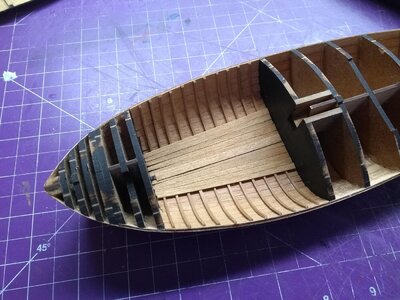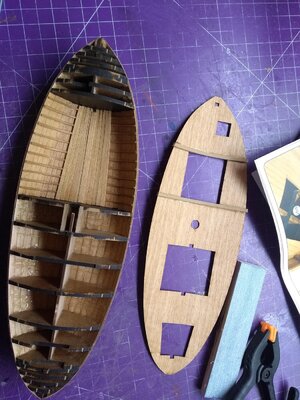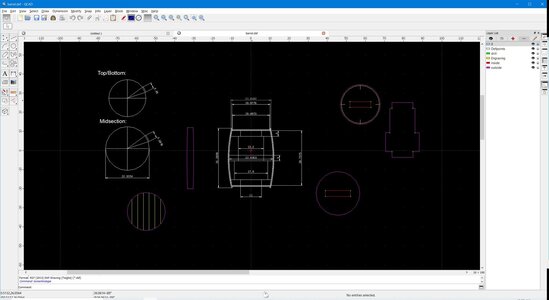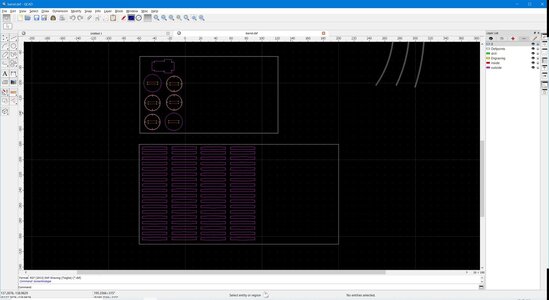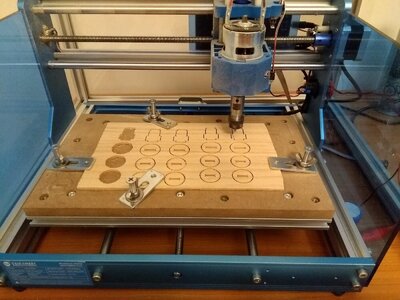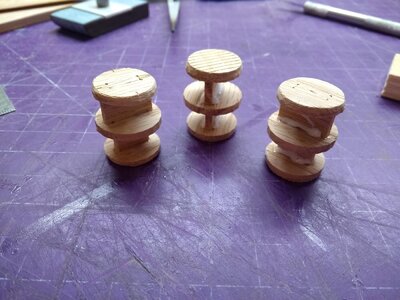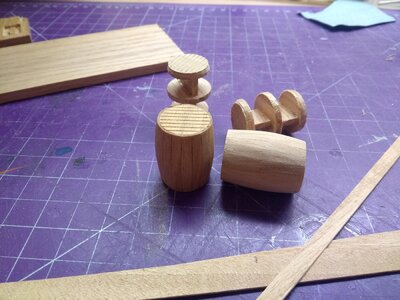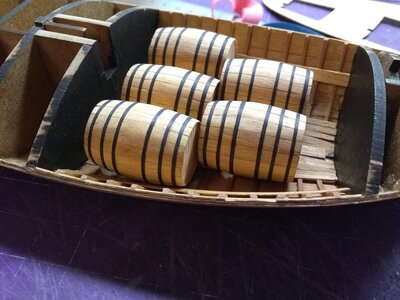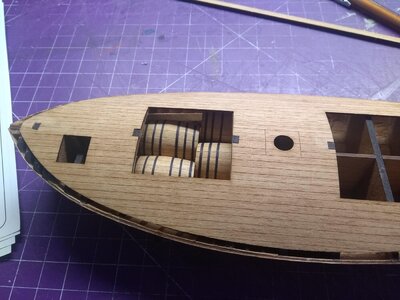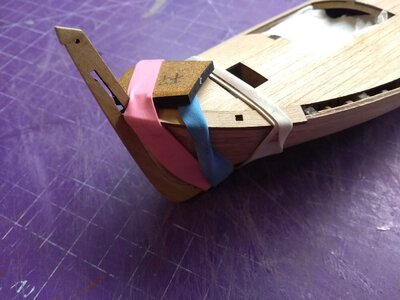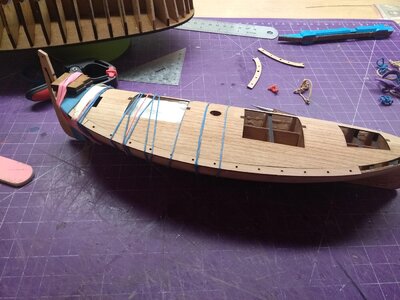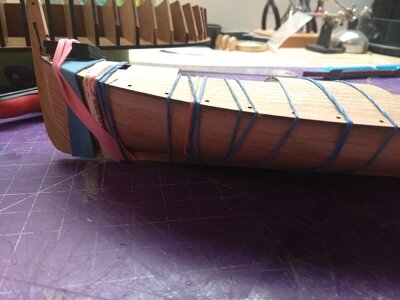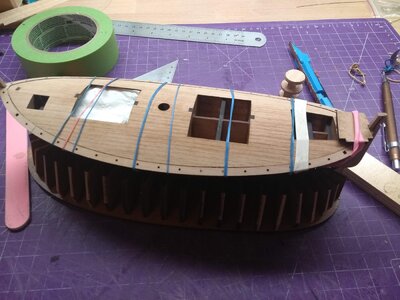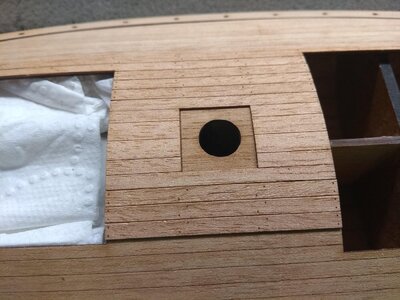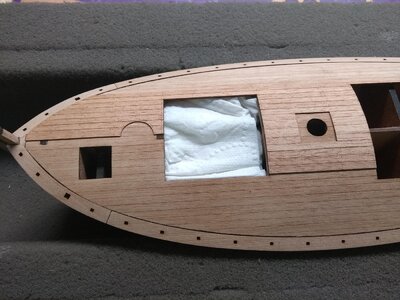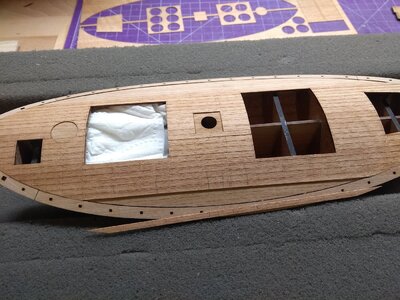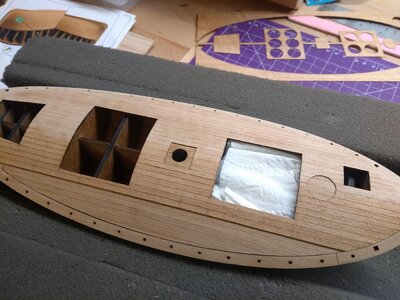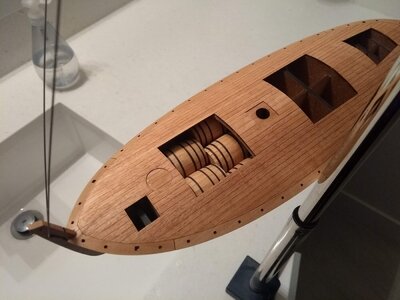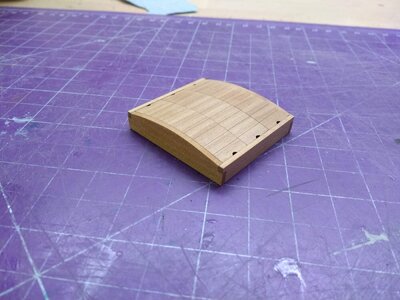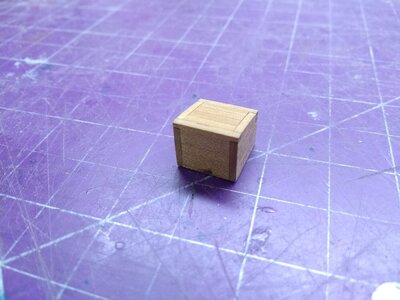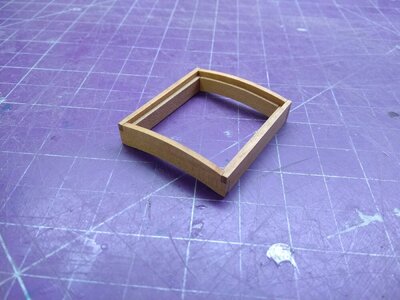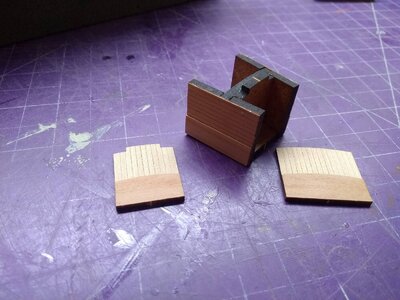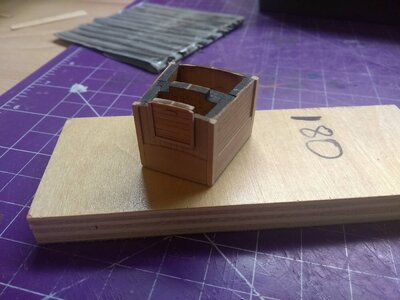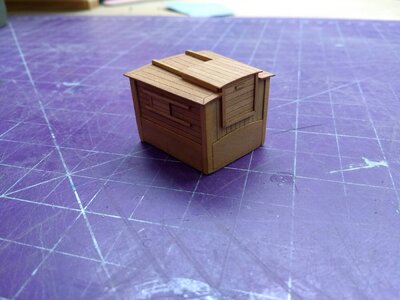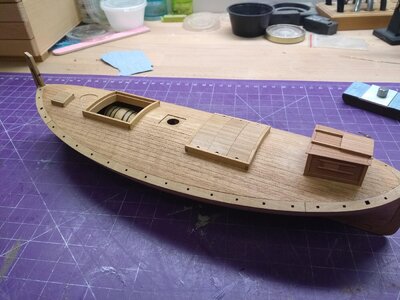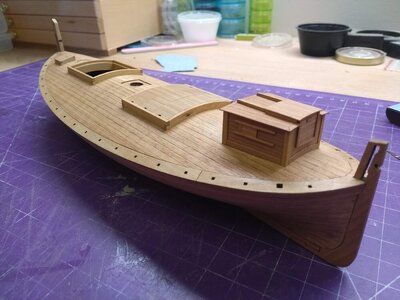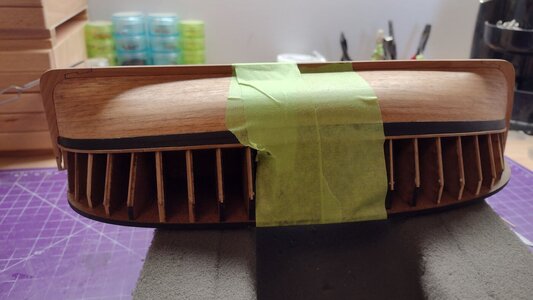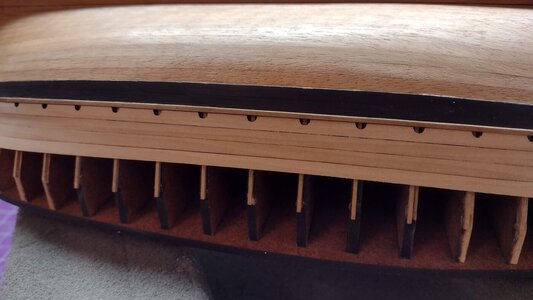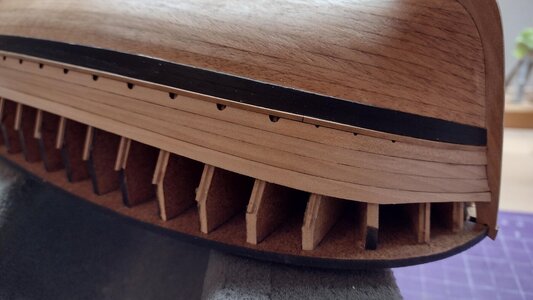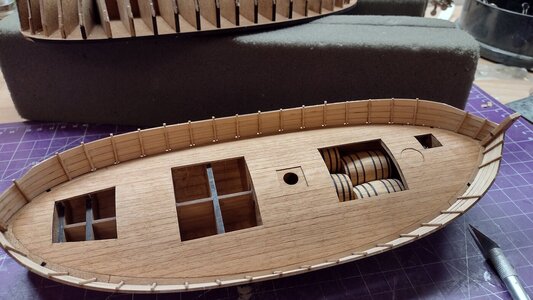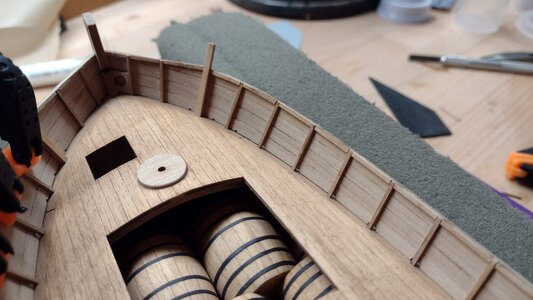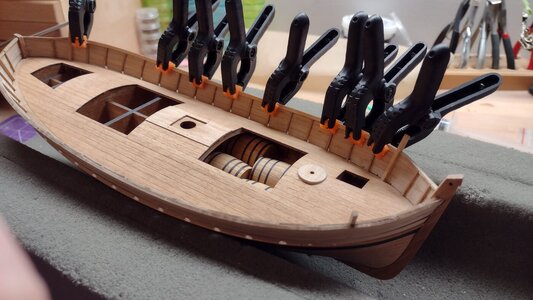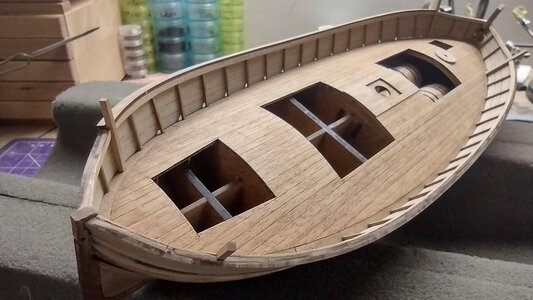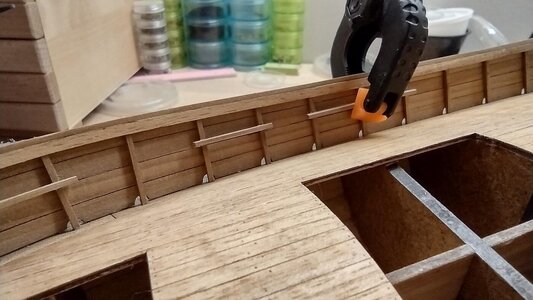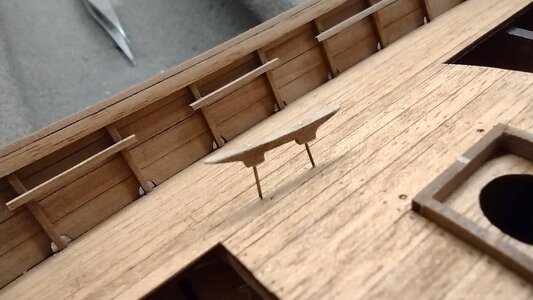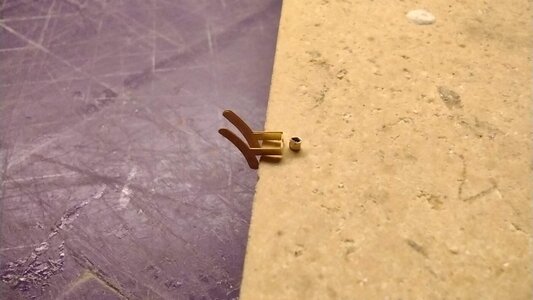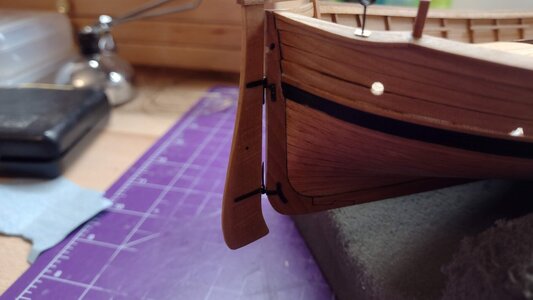After seing a Leudo build log by @Heinrich I got really excited about building this model too. It looked like a rather straightforward and fun project and I have never built a Falkonet kit before. So once my Tender Avos was finished (I still have to do the final post to my build log!) I started building Leudo right away.
I have seen a guy building Leudo with an open hatch on one of Russian forum and decided to try and make one hatch open with some oversized barrels inside.. His idea was to remove a section of the center keel and three bulkheads in the front
The first step was to prepare the center keel for this modification. I used jeweler's jigsaw and cut out an area under the fore hatch:
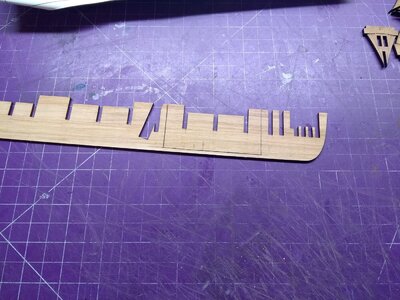
Once that piece was cut out, I reattached it to the center keel using a couple of brass pins and assembled all the bulkheads paying attention to the ones that will be removed, they are marked with "X" in the next photo. The first layer of planks will not be glued to these bulkheads.
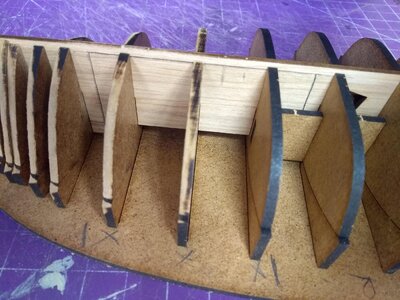
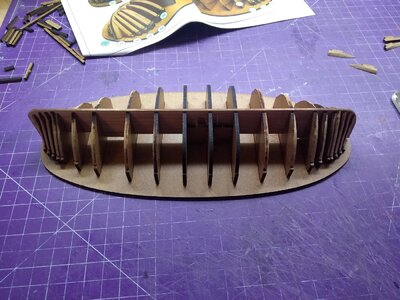
The first layer of planking went super easy! I was really impressed with how everything fitted together in this kit so far. After that I removed the part of the center keel:
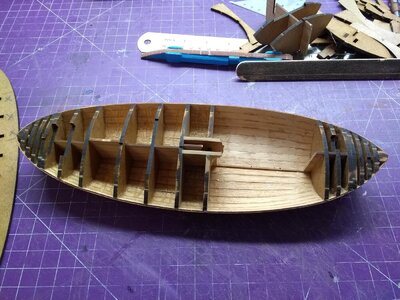
And the final layer of planking. Again, everything was super easy here. The whole step took me a couple of hours with an iron. The garboard plank is oversized, so you need to start from the top and make your way down to the keel and then trim the garboard strake:
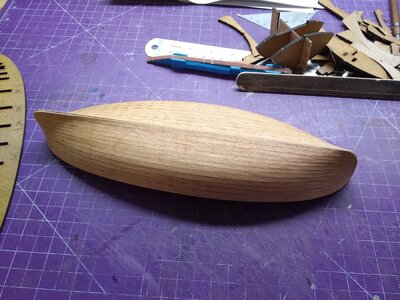
I have seen a guy building Leudo with an open hatch on one of Russian forum and decided to try and make one hatch open with some oversized barrels inside.. His idea was to remove a section of the center keel and three bulkheads in the front
The first step was to prepare the center keel for this modification. I used jeweler's jigsaw and cut out an area under the fore hatch:

Once that piece was cut out, I reattached it to the center keel using a couple of brass pins and assembled all the bulkheads paying attention to the ones that will be removed, they are marked with "X" in the next photo. The first layer of planks will not be glued to these bulkheads.


The first layer of planking went super easy! I was really impressed with how everything fitted together in this kit so far. After that I removed the part of the center keel:

And the final layer of planking. Again, everything was super easy here. The whole step took me a couple of hours with an iron. The garboard plank is oversized, so you need to start from the top and make your way down to the keel and then trim the garboard strake:






